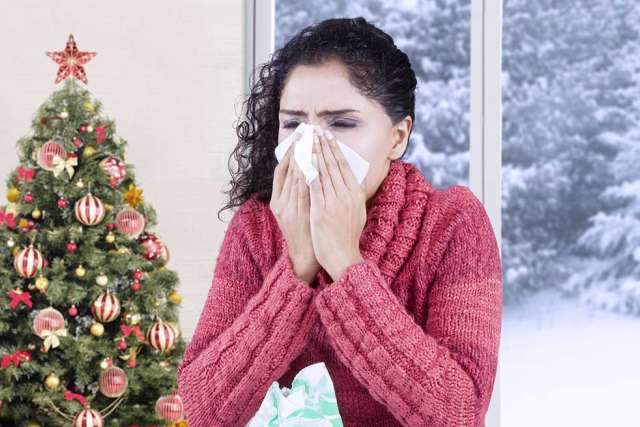After bringing their Christmas tree home, a small percentage of people face weeks of sneezing, congestion and watery eyes, also known as Christmas tree syndrome. For them, the tree doesn’t just bring a fresh scent and connection with nature — it induces an allergic reaction.
Understanding Christmas tree syndrome
Most people with Christmas tree syndrome aren’t allergic to the tree itself. Terpenes, the compounds that give Christmas trees their scent, can sometimes cause an allergic reaction if touched or smelled. Christmas trees can also be covered in allergens like dust, pollen and — the biggest nuisance of the bunch —mold.
According to the , studies show that Christmas trees can carry about 50 different types of mold and can increase the number of mold spores in an apartment by more than six times. The longer the tree stays in your home, the higher the mold spore count can get.
Mold can mess with your respiratory tract, trigger breathing issues and cause symptoms that include:
- Asthma attacks
- Coughing
- Sneezing
- Watery, itchy or sore eyes
- Wheezing
While Christmas tree syndrome tends to plague people prone to allergies and asthma, it can happen to anyone. If you tend to bring home real trees and find yourself feeling the above symptoms around the holidays each year, try these solutions to keep Christmas tree syndrome at bay:
Clean your Christmas tree
Before you bring your tree inside, take time to remove as many of the allergens as possible. Ways to do this include:
- Shaking the tree to remove loose debris
- Rinsing the tree with a hose or veggie wash, but you’ll need to dry the tree thoroughly before bringing it indoors
- Blowing debris from the tree using an air compressor
Protect yourself
If your reaction to Christmas trees is respiratory, purifying the air in the room with the tree could help. Move an air purifier into the room to trap allergens.
If your reaction happens on contact with the tree or you tend to develop a rash, have someone else bring in the tree and decorate it. Wear long sleeves and gloves if you need to touch the tree.
Choose a non-allergenic Christmas tree
While pine allergies are not common, they do happen. If pine pollen is a trigger for you, consider choosing a fir, spruce or cypress tree. The Leyland Cypress is considered a sterile hybrid tree because it doesn’t produce any pollen.
Unfortunately, these less-allergenic Christmas trees are not typically available at your local tree lot or big box store. Consider calling local Christmas tree farms where the growers know which species of tree are available.
Use an artificial Christmas tree
If you consistently have an allergic reaction each year, it might be time to consider an artificial tree. That doesn’t always mean you’re in the clear, though. Artificial trees can accumulate dust, mold spores and other allergens in storage. To avoid those irritations, unpack your tree outside. Then either vacuum it, wipe it down or consider cleaning the tree each year in the same manner you’d clean a live tree.
When you pack the tree away each year, use an airtight container or seal the box. Store the tree somewhere that is not damp or humid – mold’s favorite environment.
Check your Christmas decorations
Christmas ornaments, wreaths, and decorations may also be contributing to your allergy symptoms. After sitting in a box all year, they are likely covered in dust or mold. Unwrap them outside if possible and vacuum or wipe them down before bringing them inside. To avoid dusty ornaments altogether, decorate your tree with just lights and brand-new ribbon.
Set up a Christmas tree outside
If your allergies tend to flare up with both live and artificial Christmas trees, it doesn’t mean you have to go without one. When all else fails, set up a decorated tree outside a patio door or large window so you can enjoy it from inside.
If you’re suffering from asthma or allergy symptoms, reach out to your primary care physician who can help you with treatment and symptom management.



